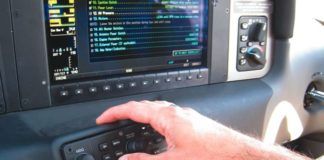Frequently we discuss that complying with the regulations isn’t necessarily safe. The common example is instrument currency where six in six isn’t always enough to remain proficient. But, I just encountered an opposite situation where an operation could be safe, but not legal.
This year’s Twin Cessna Flyers owners’ organization convention was held at the Horseshoe Bay Resort in Texas. This is a large resort with extensive facilities, including their own private airport (KDZB) that’s open to the public. It’s a nice airport with a 6000-by-100-foot runway, a jet center, and predictably expensive fuel. To serve the heavy iron that frequents the airport (in 2020, 40 percent of the based aircraft were jets), the airport has private GPS approaches to each end of the runway.
Catch that? The approaches, like the airport, are private. You might not be familiar with private approaches, but there are almost 1900 of them in the U.S. A private approach is an approach that the FAA coordinates, but doesn’t fund or publish. It’s privately developed by an aviation consultant on behalf of the requestor. The requestor often is a user of the airport who needs more or better approaches than the airport might justify on its own. At KDZB, the requestor is the airport owner itself.
To use a private approach you can’t print off the chart; it’s not published other than by the requestor. The general process to get authorized to use a private approach starts with the user going to the requestor. If that entity agrees, you then have to appeal to the FAA through your Principal Operations Inspector (typically for Part 121 or135 operators) or the local FSDO (for the rest of us). The approval process could be as simple as a paperwork exercise, or it could be as complex as proving you can safely fly the approach. Of course, expect to pay fees, sometimes significant, along the way.
I opted not to pursue the private approaches at KDZB for my flight to the convention. If the weather was IMC on the day of my arrival I’d just go to my nearby alternate. As I approached KDZB the controller told me, “Airport twelve o’clock, seven miles. Report in sight.” I was in IMC, so my reply, suitable for OTA, was, “Well, that ain’t happening. I can’t even see my wingtips, much less the airport.” I then requested and received clearance to my alternate.
Due to a fat-finger mistake selecting the alternate approach, I noticed that KDZB approaches were in the box. Yes, those private approaches (but not the charts) are in the navigator’s database. My GTN navigator even listed the stepdown altitudes. So, as long as the weather wasn’t too low—it wasn’t—one would be able to fly the approach safely but illegally, using only the information in the navigator. My approach to the alternate was uneventful.
Other pilots got in when the weather was better (safest), some flew an approach to the alternate and then broke off to scud run back to KDZB (questionable), some flew the forbidden approaches (safe in reasonable weather, but illegal), and some did as I did (legal and safe, but inconvenient). But, I was sorely tempted. What would you do?





